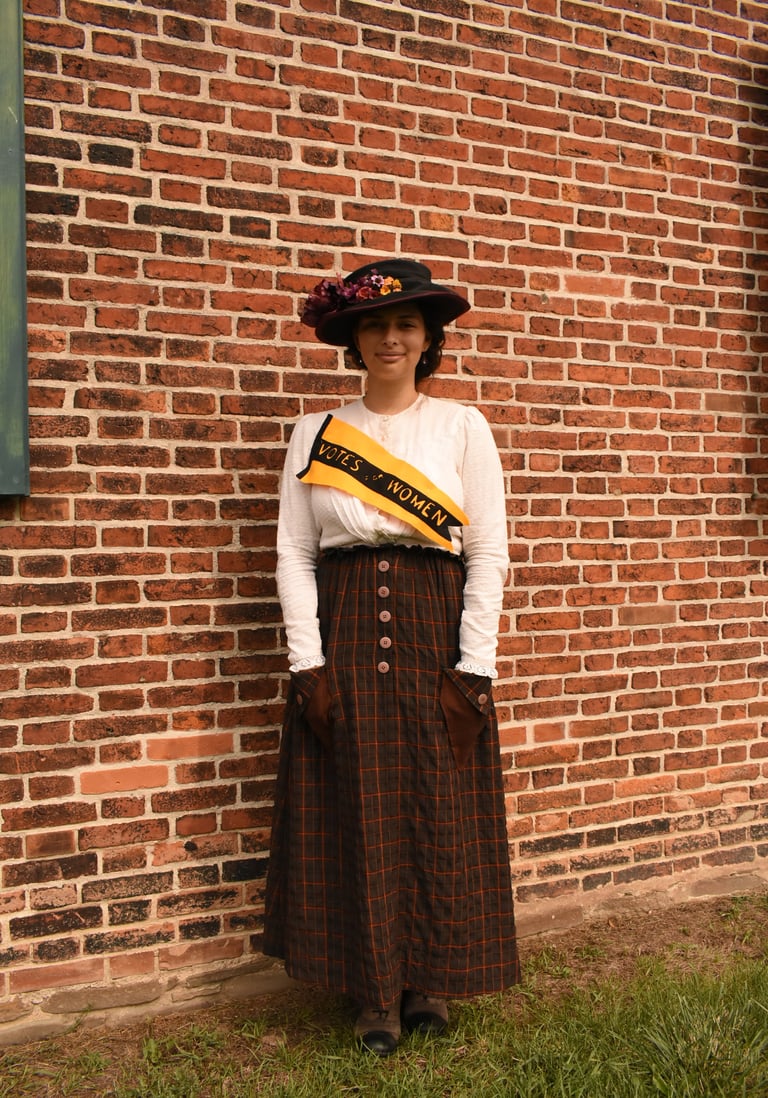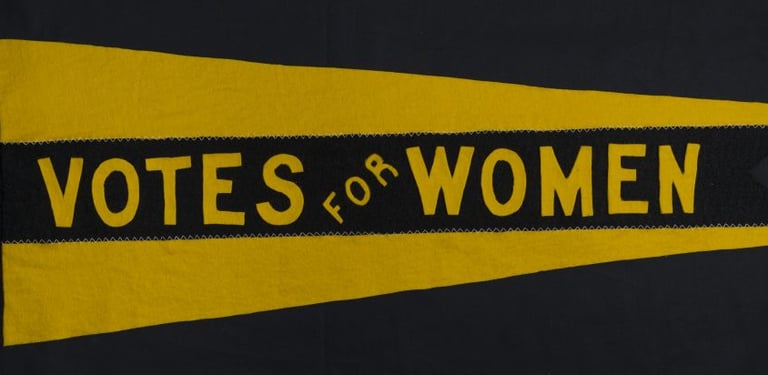The Suffragette Project
The research, design and inspiration behind the Suffragette of the 1910s.
COSTUMING
September 2021.
The story of women's suffrage in Canada is long and incomplete. Many are under the assumption that women gained the right to vote in the 1910s, and while this is true, it's not the whole story. The first demographic of women who gained the vote in Canada were white and had a male relative currently in the military. There was no sweeping federal act that allowed women the vote, but rather a rolling wave across provinces. Manitoba was the first to grant the above demographic the vote in 1916. In stark contrast, many women of colour didn't gain the vote until well into the 20th century with Indigenous women only being able to vote in national elections in the 1960s.
So why this outfit then? I was asked to interpret a Suffragette at a Great War Living History event in September. As a historian and a costumer this was an interesting task. Unlike British and American women at this time, Canadian women had a much more understated look, with very little determining features to distinguish one from being a suffragette and not. It was important to me to understand the context of this time as well to be able to accurrately explain to the public that this wasn't the be all, end all of the right to vote. In fact, before Colonization, Indigenous women enjoyed significant political liberties within the various governing structures across Turtle Island. The idea that suffrage was something to be gained is true for Settler and Immigrant women, regaining political enfranchisement is more accurate to say for Indigenous women.


Fort York, September 2021.
This subject is something that I would like to do more research on, and hopefully, make a video discussing the intricacies of this history.
As for the outfit itself, I wanted to go with a comfortable look. The skirt is the Kilbirnie Skirt pattern, which is modelled off of an extant garment from around 1915-1918. As I mentioned above, Canadian suffragettes didn't have a particular uniform or look, so using a skirt pattern that anyone could wear was an accurate choice for this outfit. The shirt was purchased second-hand at a costume sale. Some of the details are accurate like elastic around the cuffs, but it was what I had that I could make work. The hat base was purchased in the Halloween section at Value Village. To make it more accurate, fabric was draped along the top and sides, with a selection of artificial flowers added to the side. It was finished off with a plum bias tape trim around the brim. The purples and yellows were chosen strategically to pay homage to the British suffragettes at the time, who adopted purple, yellow and white as the colours for their movement. It's likely that Canadian women would have taken these colours, as well as green for the American movement, to symbolically link their cause with similar international ones. Yellow was associated with the North American suffrage movement for its links to the sunflower, the state flower of Kansas where an early movement was "crushed" in 1867.


Pennant from the Manitoba Museum, 1913-1915. H9-38-198.
For me, the focal point of this outfit was the pennant flag. I recreated this based off an artifact at the Manitoba Museum (right). I have seen images of women using similarly shaped flags worn pinned to their tops, worn hanging from a belt or waving from a pole. I struggled with this aspect of the outfit. I used felt, enough said. I would have prefered if it turned out more legible, and to do that I probably could have made it larger. That being said, I do like how it looks handmade. I imaged myself as a person from back then, working on a simple project to show my political beliefs after a long day of work, messy stitches and all.
The final element, that unfortunately wasn't finished on time for this event, was a knitted "Scarf Vest" from the Centenary Stitches pattern book. This is a great resource as the patterns within are from the time period, just "translated" into contemporary knitting language. I wanted to keep within the warm-toned, yellow theme so I chose a yarn colourway called Tumeric from Hanes Creek Heathers. I will update this blog when I have a photo of this vest in action.
All in all, this project has inspired me to do more research into the movement in Canada and its related material culture. It was great to be able to represent a part of this story at the event and bring awareness to the longer history of the "Suffragette" movement.


